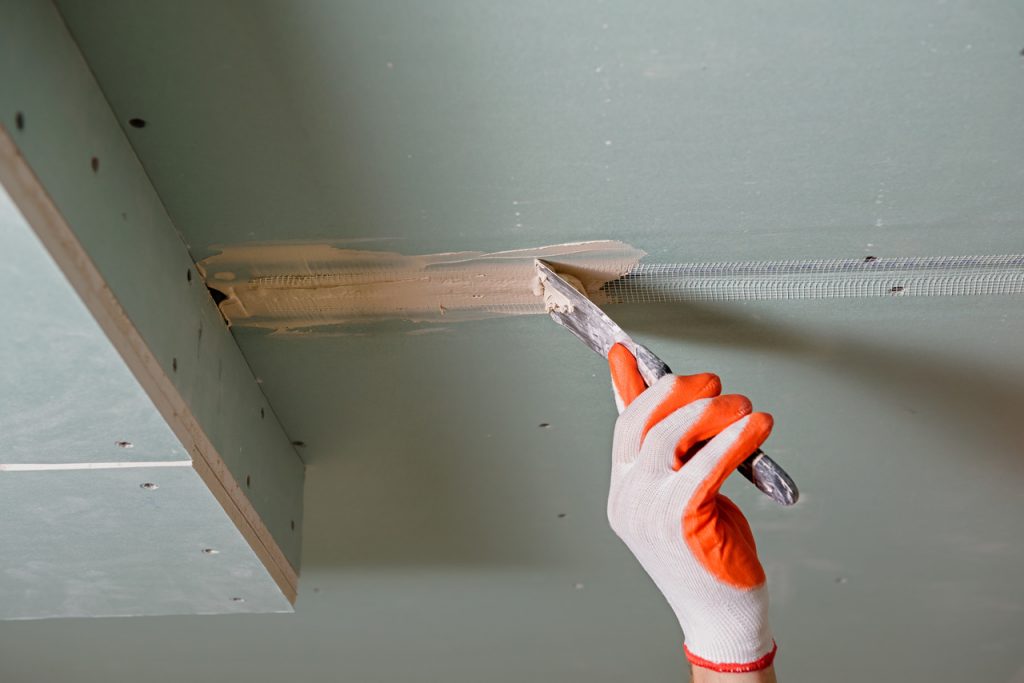Are you going to paint or wallpaper a room? Remember to fill the walls with mud first. Thanks to a new glaze you will manage it faster and… cleaner. See for yourself!
Proper preparation of walls is crucial when we want to start further finishing or renovation works. One of necessary steps is wall filling. Its aim is to fill and level minor cracks, cavities and scratches.
The task can of course be entrusted to a team of professionals, but nothing stands in the way of doing it yourself. This is quite a simple activity, you just need to collect the necessary tools, accessories and devote some time.
What is important, thanks to modern English plaster it is possible to putty walls without dust, which can be done even during one day. And this without the ubiquitous dust and dirt.
When we have everything, we can start. First of all, we remove furniture and objects so that they don’t disturb us and so that we have a comfortable space to work in. Then we clean walls from old coatings, fallen plaster and dust, remove electric sockets, remove nails, screws, plugs and hangers. The holes that are created should be thoroughly vacuumed.
When we decide to use dust-free plasterboard, there is often no need to prime the walls beforehand. However, the most important change – in comparison to traditional gypsum drywall – is that we don’t have to protect interiors and cover everything from dust that is created during grinding, which usually takes a lot of time.
This dust is also a nuisance and very dirty, it settles literally everywhere – on windows, door frames, floors, walls and equipment. No ordinary vacuum cleaner can be used to remove it. A special construction vacuum cleaner is required.

Non-dusty finish coat – or English finish coat, made of finely ground natural or synthetic gypsum – is a product that undoubtedly shortens working time. We do not waste precious moments on securing or grinding (important – grinding is not necessary at any stage of work).
What is even more important, we will get a smooth surface after applying just one layer, while normally two or even three layers are needed.
All you need to do is to add the right amount of water (as recommended by the manufacturer on the package) and mix it manually or mechanically to get rid of even the smallest lumps and the consistency will be uniform and smooth.
Application of dust-free finish coat is carried out in the same way as during traditional mudding of walls. It is quite universal. It can be used both on plasterboard and the joints between them, as well as on concrete and plaster.
Dustless wall mudding has many benefits. It can cut the time of doing this job down to a day, and it doesn’t leave a mess, but there are a few things you need to pay special attention to.
English plaster – as it does not require sanding – is more difficult to apply. We level it at the moment of application, which is when it is still wet, which is why focus, precision and accuracy are so important. In no case should you rush it, because later the effect may be far from expected.
>> See also: Wallpaper for painting. An idea for the arrangement of walls
In addition, as we have already mentioned, it requires an appropriate amount of water, so you need to be constantly careful that the finished mixture is not exposed to moisture loss. Then it will not gain its full properties. This can happen especially during dry, hot and sunny days.
Finally, remember that walls mudded with dust-free plaster are not as resistant to scratches or moisture as traditional ones.